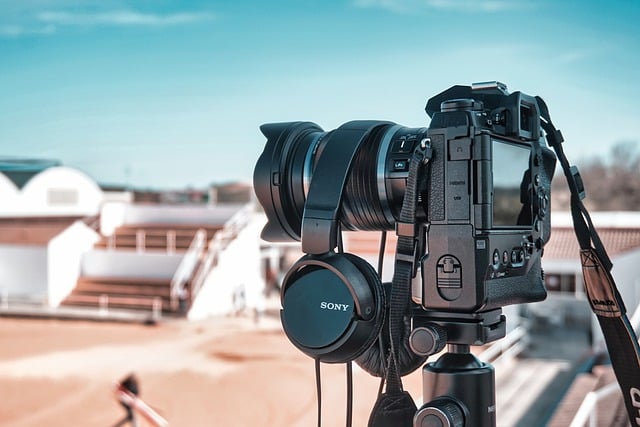The DivX file format, known for high-quality compression, is widely used for online video sharing due to its small file sizes and broad compatibility across devices. Regular updates ensure seamless playback on diverse platforms, making it a popular choice for entertainment. Seamless device integration through DivX compatibility enhances user experiences by eliminating the need for multiple players or converters, simplifying media consumption, and enabling easy content sharing. In today's interconnected world, achieving universal compatibility is crucial to bridge gaps between varying hardware and software platforms. Best practices for optimal compatibility include adhering to standard protocols, thorough testing, and regular documentation updates. The future of multimedia consumption is driven by enhanced DivX format support, enabling smoother playback on diverse devices and innovative applications in VR and AR.
Discover the power of seamless integration with various devices through DivX File Format Compatibility. This comprehensive guide explores the benefits, challenges, and best practices for ensuring smooth integration. From understanding the DivX file format to future trends, we delve into how this technology enhances multimedia experiences. Learn how to navigate common hurdles and unlock the full potential of your content across diverse platforms.
Understanding DivX File Format Compatibility

The DivX file format has long been a standard in video compression, known for its high-quality encoding while maintaining relatively small file sizes. This makes it a preferred choice for sharing and streaming videos online. When discussing DivX File Format Compatibility, it’s essential to understand that this format is designed to work across multiple devices and platforms. Modern DivX codecs are compatible with most operating systems, including Windows, macOS, Linux, and various mobile OS versions.
This versatility is achieved through continuous updates and improvements to the DivX coding technology, ensuring that videos encoded in this format can be seamlessly played on smart TVs, gaming consoles, smartphones, tablets, and computers without compatibility issues. As a result, users can enjoy their videos on any device of their choice, making it a versatile option for entertainment purposes.
The Benefits of Seamless Integration with Devices

Seamless integration with devices brings numerous benefits, enhancing user experiences and unlocking new possibilities. One key advantage is the compatibility it offers with various file formats, such as DivX, ensuring that users can access and enjoy their media content across different platforms and devices. This interoperability eliminates the need for multiple players or converters, simplifying the process of watching videos, listening to music, or accessing other digital media.
Additionally, seamless device integration allows for easier content sharing and accessibility. Users can effortlessly transfer files between devices, ensuring that their entertainment library is always at their fingertips. Whether it’s streaming high-definition videos from a smartphone onto a smart TV or syncing music collections across multiple tablets, this integration revolutionizes how we interact with our digital media in today’s interconnected world.
Common Challenges in Integrating Different Devices

In today’s digital era, seamless integration among devices is more important than ever. However, achieving this isn’t always straightforward. One significant challenge lies in ensuring compatibility across different hardware and software platforms. For instance, older devices might not support modern file formats like DivX, leading to playback issues or the need for additional codecs. Moreover, diverse operating systems have distinct protocols, making it complex to establish unified communication between, say, a smartphone, smart TV, and gaming console.
Another hurdle is interoperability among peripherals, such as keyboards, mice, and speakers. Inconsistent standards can make it difficult for devices to recognize and communicate with each other effectively. These challenges underscore the importance of seeking solutions that promote universal compatibility, like those offered by certain technologies and protocols designed to bridge these gaps and enable seamless device integration.
Best Practices for Ensuring Smooth Integration

To ensure smooth integration and optimal performance, several best practices should be followed when aiming for seamless device compatibility with a particular system. One key aspect is adhering to standard protocols and formats, such as DivX File Format Compatibility, which guarantees interoperability across a wide range of devices. Using widely accepted standards minimizes the need for frequent updates and ensures backward compatibility.
Additionally, thorough testing on diverse hardware configurations is vital. This involves simulating various use cases, including stress tests, to identify potential bottlenecks or issues early in the development phase. Regularly updating documentation to reflect changes and providing clear guidelines for users further aids in achieving seamless integration.
Future Trends in DivX File Format Compatibility

The future of multimedia content consumption is set to be shaped by enhanced DivX File Format Compatibility, driven by advancements in technology and evolving user expectations. With devices becoming increasingly connected, seamless integration across different platforms will be paramount. The latest trends point towards more efficient compression algorithms that preserve video quality while significantly reducing file sizes, enabling smoother playback on a wider range of devices, from high-end smartphones to smart TVs and streaming boxes.
Additionally, the shift towards 4K and even 8K resolution content necessitates corresponding improvements in DivX format support. Consumers are demanding richer visual experiences, and future-proofed compatibility with these ultra-high-definition standards is crucial for content creators and distributors alike. This evolution will not only enhance video streaming but also open doors for innovative applications in virtual reality (VR) and augmented reality (AR), further blurring the lines between physical and digital experiences.
The DivX File Format Compatibility has evolved significantly, offering a seamless integration experience with various devices. By understanding the format’s versatility and implementing best practices, users can navigate the challenges of different device compatibility. As technology advances, future trends promise even greater accessibility, ensuring that the DivX format remains a reliable choice for multimedia enthusiasts worldwide.
